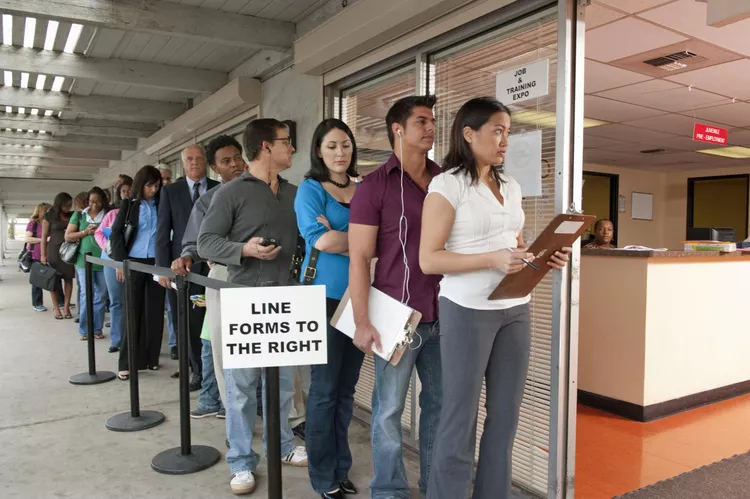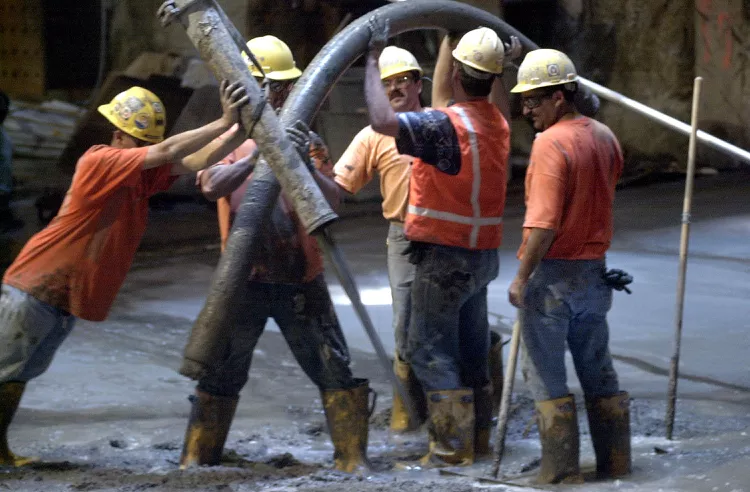Discouraged workers are people who are willing to work and are available, but have left the workforce as they don’t believe that there are any jobs for them.
These people may have searched for work in the last year but are not officially considered unemployed as they haven’t looked within the last four weeks. Discouraged workers are more likely to accept a job offer if one is made.
The Numbers
- In November 2022 there will be 405,000 discouraged workers, which is 34,000 more than September.
- They are not included in the rate of unemployment, even though they wish to find a job. The real rate of unemployment includes them.
- The official unemployment rate can be affected by discouraged workers entering and leaving the workforce.
Discouraged workers aren’t those who dropped out of the workforce for reasons that can be classified as “other.” These workers may have returned to school in order to improve their employment prospects. Some people leave the workplace because they have a new family. Some people are unable to work due to a disability. They may feel discouraged but they’re not counted.
What Discouraged Workers Mean for You
There are many reasons why discouraged workers stop looking for work. Here are some:
- It is possible that they have been unemployed so long, that their skills and knowledge have become obsolete.
- Some people may not have the education or training required to obtain the job that they desire.
- It may seem that younger workers are preferred for the jobs available.
- Some people may believe that they have been discriminated because of their race or gender.
Although discouraged workers only make up a small portion of the actual unemployed keeping a close eye on this number can tell you much about the labor markets and economy. As an example. A stagnating economy is often accompanied by an increase in the number of discouraged employees. The official unemployment rate (“U-3) does not include discouraged workers, so the report could understate the severity a downturn in the economy. In the opposite situation, discouraged workers who return to work (by actively looking for work) will be included in the U-3 figure of unemployment, increasing the rate even when the economy improves.
How discouraged workers affect the labor force participation rate
If unemployment is severe enough, discouraged workers may reduce the Labor Force Participation Rate (LFPR). As the participation rate drops at the start of a recession the number of discouraged employees increases. Many workers stop searching after six months and leave the workforce. After six months, the rate of participation and the number discouraged workers both drop.
When the economy recovers, disgruntled workers will return to work. It may be that they have a hard time finding new jobs, so the number of discouraged workers could rise for a short period. The participation rate will eventually increase, and then stabilize when the number of discouraged employees drops.
Note:
In 2020, the health and economic crises made it hard for unemployed people to find a job. Many dropped out of school until the job market improved.
History of Discouraged Workers in the Labor Force Rate
The LFPR dropped from a peak of 67.3%, in April 2000, to 65.8% by 2005. In January 2007, it rose to 66.4%, then dropped to a new record low of 62.4% by September 2015. The COVID-19 Pandemic will cause the LFPR to drop to 60.2% in April 2020. This chart shows that the large drop in employment was partly due to workers who were discouraged.
| DATE | LFPR | CHANGE | DISCOURAGED Workers | CHANGE | COMMENTS |
|---|---|---|---|---|---|
| April 2000 | 67.3% | Increase your chances of success by increasing your likelihood of success. | 327,000 | Reduce | The labor force was healthy by the end of 1990s. |
| January 2005 | 65.8% | Reduce | 491,000 | Increase your chances of success by increasing your likelihood of success. | Effects of Recession. |
| January 2007 | 66.4% | Increase your chances of success by increasing your likelihood of success. | 421,000 | Reduce | The health of the labor force has been restored. |
| December 2010 | 64.3% | Reduce | 1,301,000 | Record High | The effects of recession |
| February 2012 | 63.8% | Reduce | 983,000 | Reduce | Many workers left the workforce. Many workers were discouraged. Some went back to school, while others retired or retired. Others were forced to leave due to illness. |
| January 2014 | 62.9% | Reduce | 803,000 | Reduce | Workers leave the workforce |
| January 2015 | 62.9% | Equal | 666,000 | Reduce | Re-entry of workers into the workforce |
| January 2016 | 62.7% | Reduce | 606,000 | Reduce | Workers leave the workforce |
| January 2017 | 62.8% | Increase your chances of success by increasing your likelihood of success. | 515,000 | Reduce | As the number of discouraged employees dropped, more people returned to work. |
| January 2018 | 62.7% | Reduce | 435,000 | Reduce | The return of people to the labor force |
| January 2019 | 63.1% | Increase your chances of success by increasing your likelihood of success. | 411,000 | Reduce | The return of people to the labor force |
| January 2020 | 63.4% | Increase your chances of success by increasing your likelihood of success. | 335,000 | Reduce | The return of people to the labor force |
| January 2021 | 61.4% | Reduce | 624,000 | Increase your chances of success by increasing your likelihood of success. | The COVID-19 pandemic has had a number of effects. |
| January 2022 | 62.2% | Increase your chances of success by increasing your likelihood of success. | 408,000 | Reduce | Continued recovery after the COVID-19 Pandemic. |
FAQs (Frequently Asked Questions)
What are discouraged employees?
The marginally-attached are unemployed people who want to work and have tried to find work over the last 12 months but not the month before. The marginally attached are discouraged workers who think there are no available jobs or jobs that match their skill set.
Why do discouraged workers count as unemployed?
The number of discouraged workers is included in the unemployment count, but they are not counted as unemployed. The Bureau of Labor Statistics produces multiple measures of unemployment. The official measure of unemployment, “U-3”, includes those without a position, but who are willing to work and have actively searched for a new job over the past four weeks. The BLS does not include discouraged workers because they did not look for a job in the preceding month and are therefore not active participants on the labor market. Discouraged workers are included in another BLS measure (“U-6”) called the Real Unemployment Rate. This includes unemployed, underemployed, marginally-attached, and discouraged employees.











